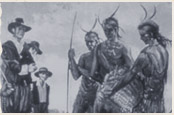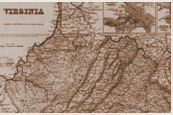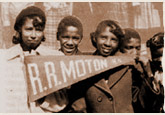Executive Order 9981
Truman Presidential Museum and Library: Multimedia Digital Archives
Description: On July 26, 1948, President Truman issued Executive Order 9981 establishing equality of treatment and opportunity in the Armed Services. This project website, produced for the 50th anniversary of the Executive Order, presents the historic document as well as interesting background materials organized in an interactive format. This resource enables students to explore an important outcome of African American military service in World War II.
Teaching Tips:
"Do Now" Suggestion
- The students can read the order and jot down ideas about how people might have responded to Truman's words (for example, from the perspective of an African-American WWII veteran, an American general, a NAACP lawyer, a white farmer, and a Soviet leader). This could be the beginning of a discussion on how the ideologies of the Cold War played out in the daily lives of Americans.
- Students can write a reactionary historical journal entry from the perspective of a former WWII African-American soldier (perhaps a Tuskegee Airman) to Truman's order. The teacher can prompt students to think about the emotions of an African-American who fought for a country in which his place is marginalized in society, especially when he was supposedly fighting to promote democracy. In the context of the increasingly threatening Cold War, what might such a person question about his country? The teacher should be sure to return to this document when the class begins to discuss the roots of the Civil Rights Movement.



